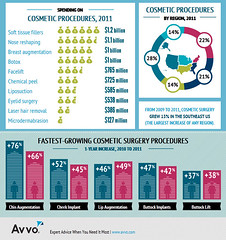Do you know about - Male correction Rhinoplasty surgery - The corporeal test
Plastic Surgery! Again, for I know. Ready to share new things that are useful. You and your friends.
Male revision rhinoplasty surgical operation is the most difficult and thoughprovoking course that facial plastic surgeons perform. Perfecting surgical operation with the three dimensional nose takes years to enhance and maybe master. In rhinoplasty surgery, minor rhinoplasty maneuvers that we do today may lead to necessary postoperative deformities three years from now. Many of us are taught that aggressive cartilage removal is a course of the past. Today's thought is "less is more". Less cartilage excision, cartilage repositioning, camouflage techniques, structural grafting and suturing techniques are being taught in most residencies and associates and at our national meetings. When original rhinoplasties are performed, the need for a time to come revision rhinoplasty is becoming increasingly common. Generally, revision rhinoplasty in males are more complicated than females because males may have higher or unrealistic expectations and often, thick nasal skin, which is more difficult to re-support the nasal tip than in thin nasal skin.
What I said. It isn't outcome that the actual about Plastic Surgery. You look at this article for information about a person need to know is Plastic Surgery.How is Male correction Rhinoplasty surgery - The corporeal test

In male original rhinoplasty surgery, the key to stoppage of complications is pre-diagnosis of inherent anatomical and functional abnormalities. For example, a inpatient desires a dorsal hump discount and you identify short nasal bones, thick skin and a long middle vault. Your proper assessment will warn you that this inpatient is at risk for upper lateral cartilage subluxation from the nasal bones (inverted-V deformity) and internal valve collapse following osteotomies.
For male revision rhinoplasty patients, initially perform a detailed anatomic and functional assessment of the nose followed by documentation of the postoperative nasal deformities that are gift and sites of nasal obstruction. After the problems and inherent complications are identified, create a general surgical plan while studying the preoperative photographs and put in order to use all in your surgical armamentarium since your preoperative plans for revision nasal surgical operation will regularly change during surgery.
Below is my algorithm for a revision rhinoplasty consultation. When the appointment is made, the inpatient is asked to bring a copy of their medical records and operative reports from their rhinoplasty surgical operation or surgeries, in expanding to photographs of their native nose. Delineate the notes and photos while the prospective inpatient is discussing surgical operation with your inpatient care coordinator. This will give you a head start on identifying the problems assuming that a qoute exists. Next, a detailed history is performed while listening very considered to the patient's wishes. Does he have realistic expectations? This is by far the most important information that the astute surgeon needs to attain from the history. What is the inpatient unhappy with - a pinched tip or polly-beak deformity?
Additionally, listen to the inpatient and see if negative comments are made or if the inpatient is seeking litigation against the prior surgeon. If this is the scenario, you may want to think twice prior to performing a revision rhinoplasty on this patient. If the male inpatient is not happy with the results of his surgical operation by you, there is a good opportunity that he will be saying unkind words about you in the subsequent surgeon's office. Does he fit the Simon profile (Single, Immature, Male, Obsessive, and Narcissistic)? If so, watch out since these patients are very difficult to please and are litiginous. during the initial five minutes of your history, the astute surgeon should know if the inpatient is a good candidate for revision surgery. Poor inpatient choice can lead to an unhappy inpatient and surgeon.
Another important information is to ascertain if the inpatient has nasal obstruction. The incidence of postoperative nasal obstruction following a original rhinoplasty is practically 10%.1 rule if the nasal obstruction was gift preoperatively. If the obstruction is a consequent of the surgery, a whole of questions need to be answered. Did the inpatient have reductive rhinoplasty surgery? Have the inpatient point out where the obstruction is. Is it static or dynamic? gift with general or deep inspiration? What alleviates and worsens the nasal obstruction? What are the characteristics of the nasal obstruction? Was septal surgical operation performed? The corporeal test ensues.
For the corporeal exam, I use a detailed nasal diagnosis worksheet perform a detailed visual and tactile assessment of the nose. Use an ungloved finger to feel the nose. observe the bony and cartilaginous skeleton, tip and skin-soft tissue envelope characteristics in frontal, oblique, lateral and base views. For the bony dorsum, observe the osteotomies, proximity of open roof deformity or rocker deformity, and hump under- or over- resection. If inadequate hump discount is in question, first observe for a deep radix and/or under-projected, ptotic nasal tip and for microgenia.
Look for middle vault abnormalities such as a narrow middle vault, inverted-V deformity or under-resection of the cartilaginous dorsum (polly-beak deformity). For the tip, observe tip projection, rotation, support, alar and columellar retraction, over-aggressive alar base reduction, and lower lateral crural characteristics such as over-resection, cephalically oriented or bossa formation. Over-resection of the lower lateral cartilage complicated in males with a heavy sebaceous skin-soft tissue envelope can cause tip ptosis and subsequent, nasal obstruction. A deviated cartilaginous dorsum and tip can signify a deviated septum. This is only a partial list of anatomical problems that the surgeon needs to identify in nasal analysis.
For male patients with nasal obstruction, observe him performing general and deep inspiration on frontal and basal views. Often, the diagnosis is actually identifiable as supra-alar, alar and/or rim collapse (slit-like nostrils) during static or dynamic states. External valve collapse (lower lateral cartilage pathology) can be evaluated with the soft end of a cotton swab while plugging the contra-lateral nostril. The cotton swab elevates the area of obstruction whether it's the alar rim, lower lateral crura or supra-alar region. See if the nasal obstruction is alleviated by elevating the nasal tip in patients with ptosis of the nasal tip. perform the Cottle maneuver (pulling laterally on the cheek) to check for internal valve collapse. Although this test is generally non-specific, internal nasal valve diagnosis caused by supra-alar pinching or a narrowed angle in the middle of the upper lateral cartilage and septum can be diagnosed. On basal view, observe the medial crura feet to identify if they are impinging into the nasal airway.
Following a proper external nasal evaluation, the endonasal test ensues. At minimum, perform former rhinoscopy with and without topical decongestion. In safe bet cases, nasal endoscopy and rhinomanometry may be useful. Value the nasal septum for perforations, persistent deviation and for any remaining cartilaginous remnants to be used for grafting. Other causes of nasal obstruction to identify are: hypertrophic inferior turbinates, synechiae in the middle of the lateral nasal wall and septum, nasal masses and middle turbinate abnormalities (concha bullosa).
As you are examining the patient, create a mental qoute list with solutions followed by documentation on your nasal diagnosis sheet, such as: 1. External valve collapse secondary to over-resected lower lateral crura with a plan of open rhinoplasty with alar batten grafts using conchal cartilage, 2. Internal nasal valve collapse secondary to a narrow middle vault and supra-alar pinching with moderate inspiration with a plan of bilateral spreader grafts and supra-alar batten grafts using conchal cartilage, and 3. Bilateral alar retraction with a plan of bilateral conchal composite grafts. If structural grafting is necessary, rule what material may be used. A proper knowledge of the types of autologous (septal, conchal, costal cartilage, deep temporalis fascia, and calvarium) or alloplastic grafting is needed as well as harvesting techniques.
This is only an initial plan as you are creating your algorithm. Guaranteed, it will change as you get closer to surgery. Computer morphing can be extremely beneficial if patients are notified that the final image is not a warrant of results. However, despite permissible notification and consent, there have been reports of lawsuits filed by patients for outcomes that are dissimilar than what was generated by the computer imager. Computer imaging can give clues to the patient's expectations. Unrealistic expectations can be identified when a conservative image is generated by the surgeon and the inpatient desires a radical change. Therefore, computer imaging can be a suited tool in evaluating patients for surgery. I can't count the whole of times that I have rejected male patients for original and revision surgical operation secondary to them having unrealistic expectations only being identified by the computer morphing. An supplementary use for the computer image is to use it as a goal in surgery. Bring the preoperative and computer imaging photos to the operating room.
I hope you obtain new knowledge about Plastic Surgery. Where you may offer use in your daily life. And most importantly, your reaction is Plastic Surgery.Read more.. Male correction Rhinoplasty surgery - The corporeal test. View Related articles associated with Plastic Surgery. I Roll below. I actually have suggested my friends to assist share the Facebook Twitter Like Tweet. Can you share Male correction Rhinoplasty surgery - The corporeal test.
No comments:
Post a Comment